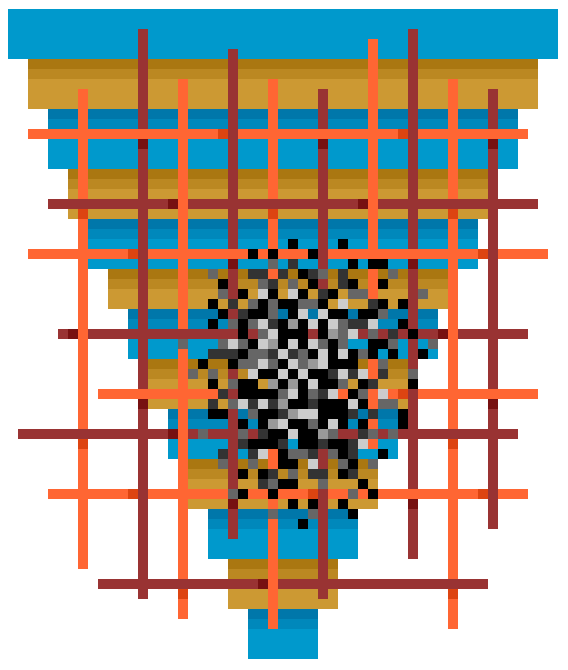
screenshot of 20180809 – 221, 20180809, HTML, 650 x 550 pixels
If you're a seller of stock in an initial public offering, the SEC makes rules about when you can sell, and what methods you can use to alert the public ahead of time, to prevent insider advantages or favoritism.
The art market is traditionally a "wild west" where individual discretion of galleries determines such rules. "Pre-selling" a show -- where the dealer calls around to a few favored collectors to generate some "red dots" ahead of the opening -- is a fairly conventional practice. No one blames dealers for trying to keep their doors open in a tough, flighty business.
A non-profit gallery space must follow state and federal tax rules regarding its tax-exempt status. These rules allow selling artwork for fundraising, subject to various restrictions. "Pre-selling" isn't forbidden, but if a work is offered at a near-market price it may be subject to sales tax. Regardless, the nonprofit wants to maintain an appearance of fairness in how sales are structured.
Let's say, hypothetically, a nonprofit is having a fundraiser with donated artwork. The gallery invites a number of artists, each of whom will contribute a single editioned work for sale. All donated artworks are offered for sale to the public for a standardized (low) dollar amount.
What is the best way to structure the sale to avoid the appearance of favoritism? Obviously collectors will be attracted by the prospect of buying a "name" artist at a trifling price. Some options:
1. Don't invite any name artists. Unfortunately you need these cash cows to generate buzz and/or sales for non-name work, so that's not really a choice. In any case, the gallerist is using personal connections, calling in favors, and/or exercising personal judgment regarding potential "hot" names to invite, so already this isn't a very democratic procedure.
2. Invite name artists, but structure the sale as a one night event, with online or walk-in sales afterward. This is fair, it gives every buyer the same chance to buy a name artist.
3. Have the opening, and call around a few favored donors ahead of time to alert them to the presence of hot artists in the show. Doesn't smell too good, for a nonprofit.
4. Have a "soft" or passive presale, where emails go out to press and/or regular gallery mailing list announcing that works will be for sale online in advance of the official opening. This effectively guarantees that all the name artists' work will be unavailable by opening night. Better than option 3 but not as squeaky-scrupulous as option 2. All in all, probably an acceptable compromise for a gallery looking to drum up excitement, raise money, but also avoid unseemly stampedes the night of the opening. Option 2 is still the best choice, though.
Within the framework of short, satisfying detective plots featuring his recurring character "Inspector Maigret," Georges Simenon maintains a steady flow of observations about class, sex roles, economic tensions, and everyday etiquette in mid-20th Century France. In ambition and quality, the project recalls the human comedy of Balzac (who Simenon admired), spread over years of genre installments. Simenon also wrote "real" literature during this period -- stellar books such as Monsieur Hire's Engagement and The Man Who Watched Trains Go By -- but taken as single project, and given changing ideas of the relative value of "genre" within the literary fraternity, the Maigret books are real enough.
The novels don't follow a strict chronology; however, by the time of Maigret and the Lazy Burglar (1961), our intrepid Parisian police functionary is nearing retirement. Simenon meditates on the aging of his character and the changing nature of police work since the series began thirty years before. In the early stories Maigret could run an investigation as he desired, whether it meant wandering the streets waiting for intuitive connections to present themselves, or hauling in suspects and (non-violently) sweating confessions out of them.
By the 1960s, police departments had begun shifting case management and decisionmaking away from inspectors and more towards prosecutors' offices, within a modern, scientific system of justice that, in Maigret's opinion, elevated "exams" and "efficiency" over street knowledge. Meanwhile, the rights of the accused received more recognition than they had in the 1930s -- perhaps in imitation of the American system? Maigret doesn't tell us. Even though he rarely if ever abused his earlier powers, by the time of Lazy Burglar, he resents having the discretion taken away, and especially having to cede it to remote bureaucrats who lack his judgment and life experience. This is less Dirty Harry than it sounds.
In Lazy Burglar [caution: plot points], Maigret covertly rebels against prosecutors by pursuing his own investigation of a case after they have assigned it to another detective, and then rebels again when his digging "solves" the crime. He simply declines to bring the truth to his superiors, reasoning that because the murder victim, a burglar whose professionalism Maigret somewhat admires, is a marginal figure (reminiscent of Monsieur Hire) and the likely murderer a sheltered aristocrat, justice will not be served in any event. Ultimately Maigret retains the Godlike power not to prosecute, which, as the reader well knows, he exercised many times in the course of a long career. Despite the crook's getting away with it, the story has a happy ending, which will not be revealed.